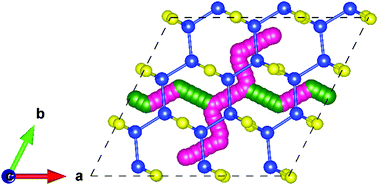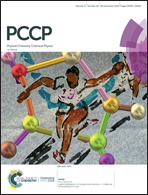Two-dimensional NaxSiS as a promising anode material for rechargeable sodium-based batteries: ab initio material design
Abstract
The rapidly rising demand for energy storage systems presents an imperative need to develop sodium-ion batteries with high energy density, high conductivity, and low barrier energy. In this work, we present a Density Functional study on the properties of two-dimensional NaxSiS as a promising anode material for rechargeable sodium-ion batteries. Energetically stable structures of Na-adsorbed silicene sulfide NaxSiS with various Na contents were explored. It is found that the adsorption energy of a Na atom is higher than −0.4 eV and it decreases with increasing Na content. The electronic structure of pristine silicene sulfide shows semiconductor behaviour with a bandgap of 0.99 eV, while the Na-adsorbed SiS exhibits metallic characteristics. The highest theoretical capacity of 187.2 mA h g−1, which is higher than that of well-known two dimensional materials, is found in the fully intercalated phase of SiS Na0.5SiS which corresponds to per side layer. Furthermore, Na ions can diffuse along two typical pathways on the surface of SiS with a small barrier of 183 meV which is much smaller than that of the two dimensional LixSiS, NaxTiS2, and NaxMoS2. All these characteristics suggest that silicene sulfide SiS can be expected to be a promising anode material for sodium ion batteries.



 Please wait while we load your content...
Please wait while we load your content...